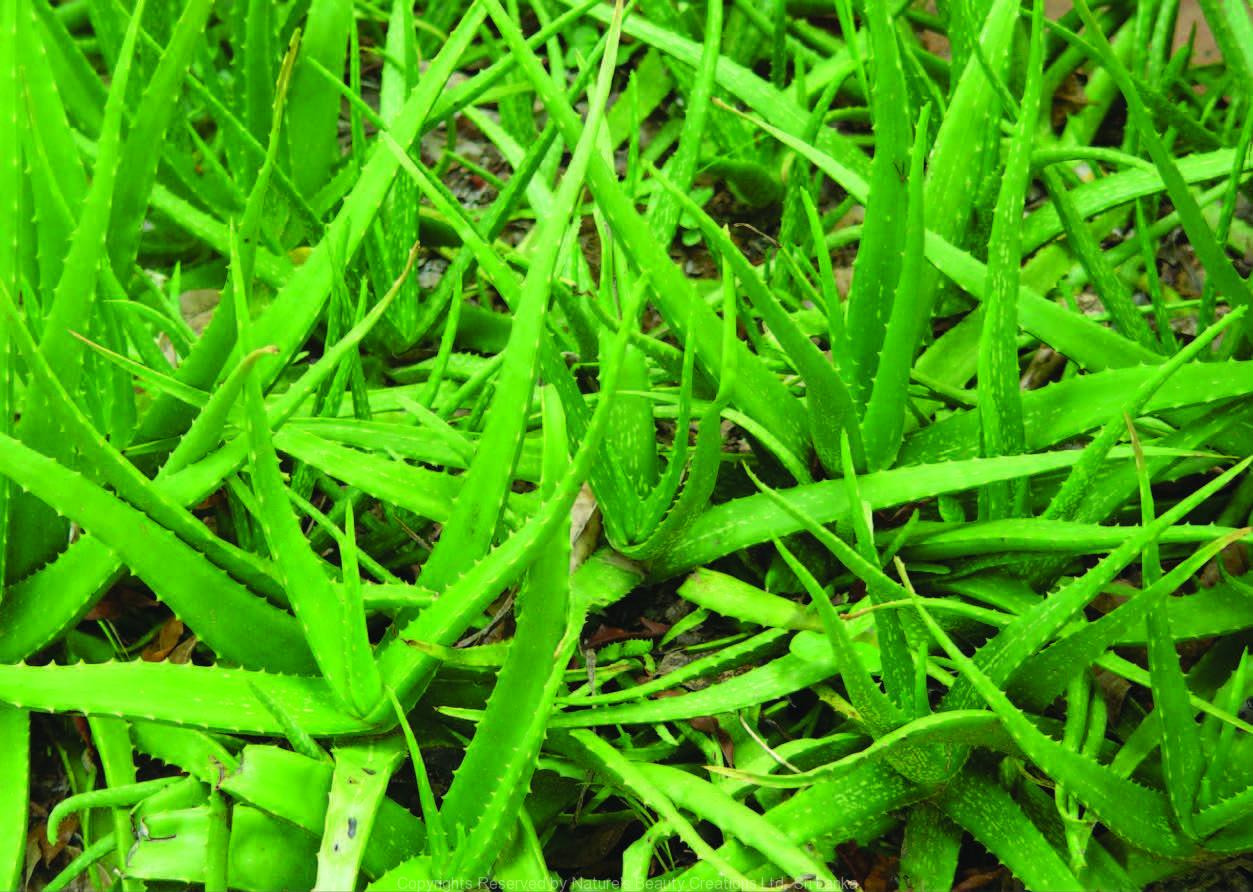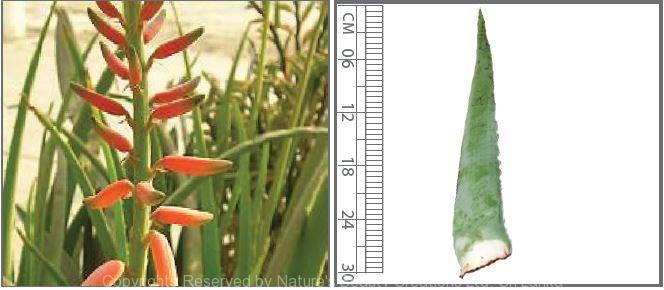

Traditional Knowledge
Useful plant parts :
Whole plant, leaf and leaf gel
Uses in traditional medicine :
- Germinated green grams placed within split leaves and kept under hot ashes and prepared as a porridge is used to treat liver problems
- Helps in sustaining youthful appearance due to its positive effects on the skin
- Used to treat eye diseases, hair fall, burns, scalds and dyspepsia
Scientific Research
Chemical constituents:
Anthraquinone: aloin and its derivatives, emodin from exudes; polysaccharide: aloeride from crude juice; phenolic compounds: isorabaichromone, resistannol and anthracene, anthranol, α-tocopherol β-carotene, β-sitosterol from the plant
Bioactivity :
Gel: anti-inflammatory, wound healing; pulps of leaves devoid of the gel: useful in the treatment of non-insulin dependent diabetes mellitus; isorabaichromone: antioxidative; aloeride: immunostimulatory
Clinical:
Gel is effective against burn wounds; 0.5% Aloe vera in a hydrophillic cream is reported to have effective results against psoriasis; Main ingredient of a laxative, prepared in combination with celandin and psyllium
References : Final Report on the Safety Assessment of Aloe Andongensis Extract, Aloe Andongensis Leaf Juice, Aloe Arborescens Leaf Extract, Aloe Arborescens Leaf Juice, Aloe Arborescens Leaf Protoplasts, Aloe Barbadensis Flower Extract, Aloe Barbadensis Leaf, Aloe Barbadensis Leaf Extract, Aloe Barbadensis Leaf Juice, Aloe Barbadensis Leaf Polysaccharides, Aloe Barbadensis Leaf Water, Aloe Ferox Leaf Extract, Aloe Ferox Leaf Juice, and Aloe Ferox Leaf Juice Extract, 2007, International Journal of Toxicology, 26(2), 1-50, Odes, H. S. and Madar, Z., (1991), A Double-Blind Trial of a Celandin, Aloe vera and Psyllium Laxative Preparation in Adult Patients with Constipation, Digestion, 49(2), 65-71. Okyar, A. et al., (2001), Effect of Aloe vera leaves on blood glucose level in type I and type II diabetic rat models, Phytotherapy Research, 15(2), 157-161. Paez, A. et al., (2000), Growth, soluble carbohydrates, and aloin concentration of Aloe vera plants exposed to three irradiance levels, Environmental and Experimental Botany, 44(2), 133-139. Pugh, N. et al., (2001), Characterization of Aloeride, a New High-Molecular-Weight Polysaccharide from Aloe vera with Potent Immunostimulatory Activity, Journal of Agricultural and Food Chemistry, 49(2), 1030-1034. Somboonwong, J. et al., (2000), Therapeutic effects of Aloe vera on cutaneous microcirculation and wound healing in second degree burn model in rats, Journal of the Medical Association of Thailand, 83(4), 417-25. Syed, T. A. et al., (1996), Management of psoriasis with Aloe vera extract in a hydrophilic cream: a placebo-controlled, double-blind study, Trop Med Int Health, 1(4), 505-9. Visuthikosol. V, et al., (1995), Effect of Aloe vera gel to healing of burn wound a clinical and histologic study, J Med Assoc Thai, 78(8), 403-9. Yagi, A. et al., (2002), Antioxidant, Free Radical Scavenging and Anti-Inflammatory Effects of Aloesin Derivatives in Aloe vera, Planta Med, 68(11), 957-960.
Copyrights Reserved By
Natures Beauty Creations




